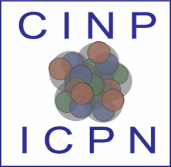Post-doctoral position in machine learning and hadronic physics at CEA Saclay
CEA Saclay (France) seeks to hire a post-doctoral fellow, who will join both the Nuclear Physics
Division at Irfu and the Artificial Intelligence division at LIST for a one-year position, renewable
another year. He will be expected to develop crystal-box machine learning algorithms in order to
analyze the data collected this fall and in the spring 2018 with the CLAS12 spectrometer at
Jefferson Laboratory (USA).
With its 12-GeV electron beam sent on a fixed target, Jefferson Laboratory is the world leading
facility to understand the strong interaction within hadrons and nuclei. This fall, the upgrade of the
spectrometer in the Hall B of Jefferson Lab will be completed. After a commissioning period, data
will be collected on an unpolarized liquid hydrogen target to study the proton structure. The nuclear
physics department at Saclay is a leading institute of the flagship experiment dedicated to deeply
virtual Compton scattering, the golden process to perform the tomography of nucleons. Because of
the unprecedented statistical accuracy of the data set, it will be of outmost importance to keep
systematics uncertainties as low as possible during the analysis.
To achieve this goal, the nuclear physics division is starting a program aiming at developing crystalbox
machine learning algorithms to analyze the experimental data. Indeed machine-learning
techniques, such as neural networks, have proven to be more efficient in terms of selection and
classification of physics events. However, the impossibility to recover the logic behind the decision
makes them delicate to use in a physics analysis. Unlike neural networks, crystal-box algorithms
make it possible justify a result and simplifies the handling of uncertainties on the input parameters.
This specificity will allow recovering the logic for validation purposes but might also open new
perspectives by improving our understanding of the data. This program will be carried out jointly
with the LIST, a world-leading laboratory in the field of machine learning at CEA/Saclay.
The primary task of the successful candidate will be to develop an algorithm to discriminate DVCS
events from other sources of backgrounds, and extract the corresponding cross section in the end.
Applicants should have completed a PhD in experimental nuclear or high-energy physics, have
significant expertise in object-oriented programming. Experience with machine-learning algorithms
or tensor flow would be beneficial.
Applications should include:
- A 2-page cover letter with a description of previous work experience.
- An academic CV including a list of the candidate’s most relevant publications, analysis notes or
talks given in international conferences or workshops.
- 2 recommendation letters.
Applications should be sent to maxime.defurne@cea.fr. More information may be requested at the
same e-mail adress.
